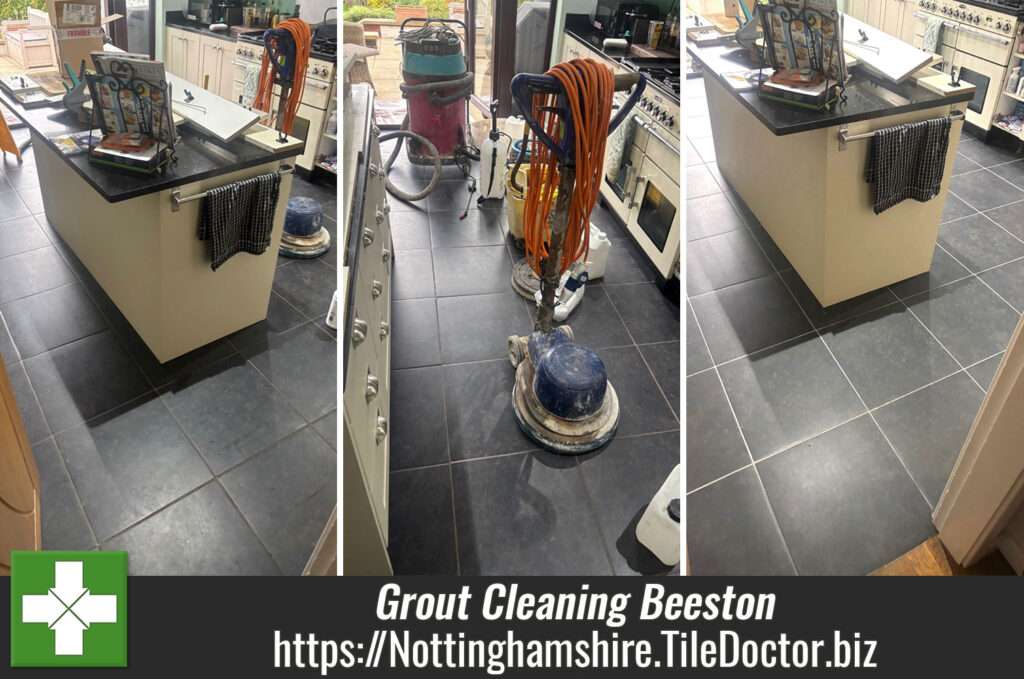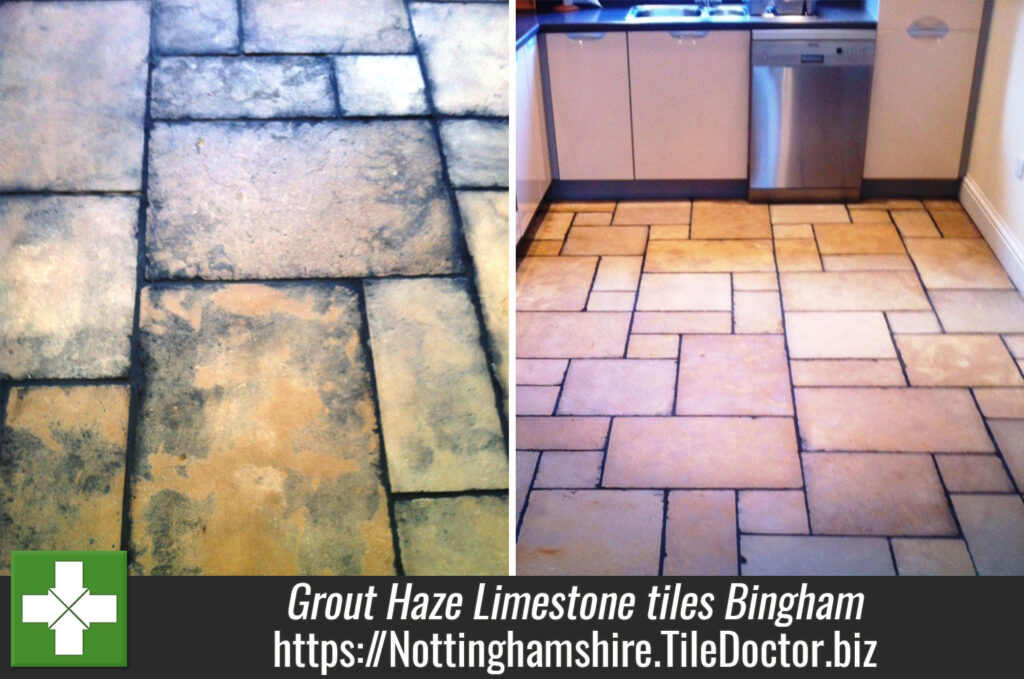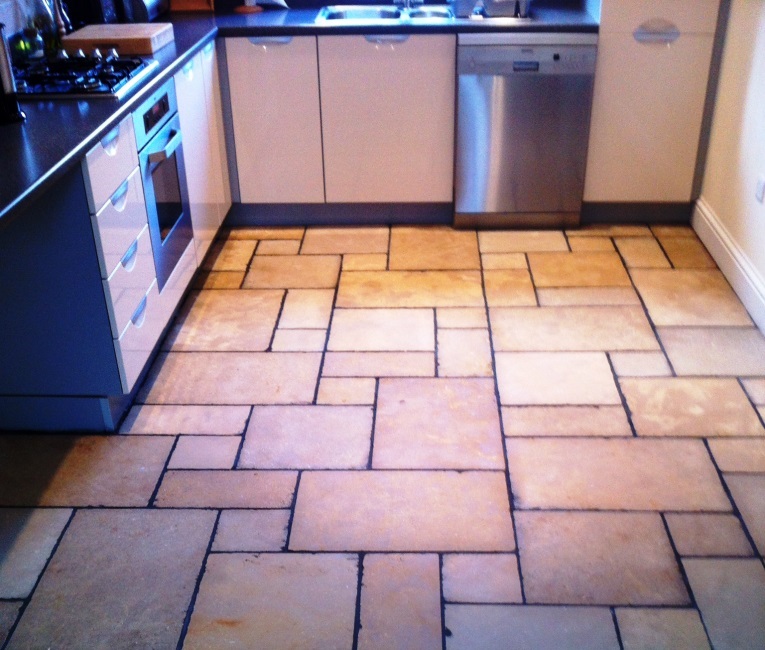20-Year-Old Porcelain Floor & Grouting Deep Clean in Beeston
Here we have a 20-year-old Porcelain tiled kitchen floor at a property in Beeston where I was asked to carry out a deep clean. The main issue was the Grout which had basically turned from what was a nice clean white to a grubby dark grey with accumulated dirt. The porcelain tiles were matt with an unusual, speckled pattern.
Porcelain tiles are generally easy to keep clean due to being impervious to water. The trouble is however that the dirt from the tile gets washed into the grout line during cleaning where it gets stuck in the cementitious grout, eventually causing it to discolour.
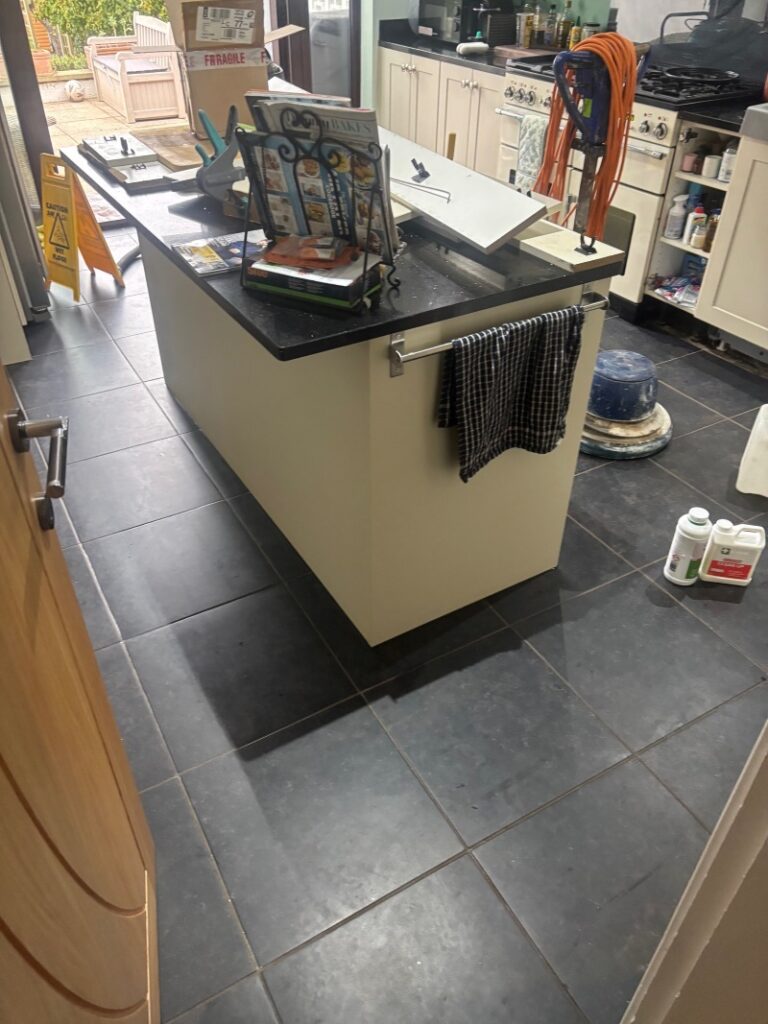
I quoted for cleaning the tiles and giving the grout a deep clean to remove the dirt and restore its fresh white colour. Happy to have found a solution to their grout issues my quote was accepted and a date booked in the diary.
Cleaning a Porcelain Tiled Kitchen
On my return I decided it would make sense to focus on the discoloured grout first and review the tiles second. So, to help break down the soiling that had built along the grout line I started with an application of Tile Doctor Pro-Clean diluted 1:4 with water. This product is a strong alkaline degreaser that’s safe to use on all types of tiles and grout.
The solution was allowed to soak in for fifteen minutes prior to scrubbing with a rotary floor machine fitted with a nylon scrub brush. The brush works well on grout as the bristles get into the recesses of the grout lines. The brush was run over the grout lines first to get them as clean as possible and then moved over the surface of the porcelain tiles.
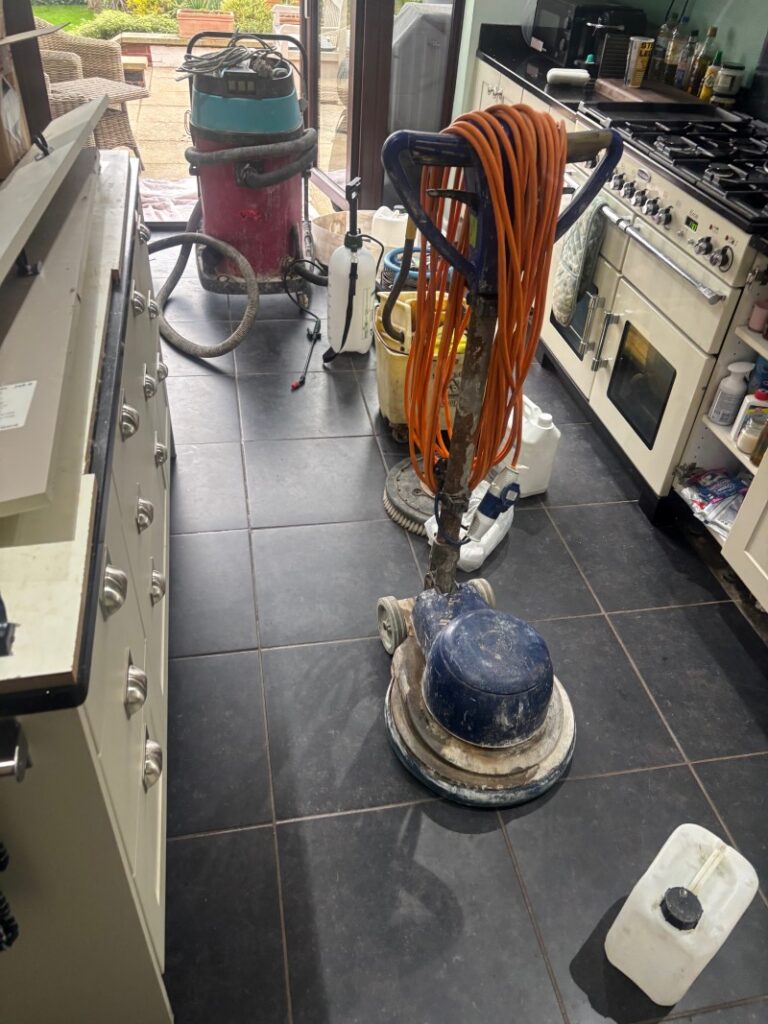
Once done the resulting slurry was removed with a wet vacuum and the grout inspected, any stubborn staining was then re-treated with more Tile Doctor Pro-Clean and scrubbed by hand.
Sealing a Porcelain Tiled Kitchen
The next step was to give the floor an acid wash to further clean up the tile and grout and to neutralise the pH level of the floor following cleaning with Tile Doctor Pro-Clean. To do this I used Tile Doctor Grout Clean-Up using a 1:10 dilution with water. It was applied to the tile & grouting and then brushed in before being rinsed off with water and extracted with the wet vacuum.
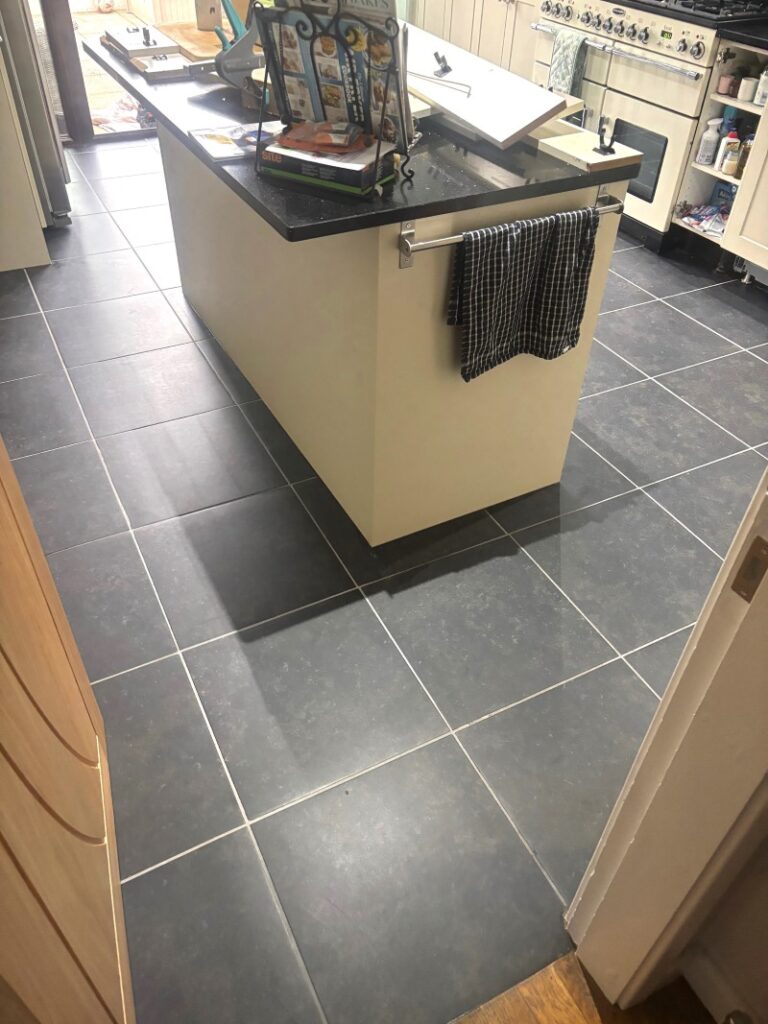
Finally, the floor was given a thorough rinse with fresh water and then dried with the wet vacuum. To speed up the drying times a floor fan was deployed which ensured the floor was dry before I left allowing the client could see how effective the work had been. There is no need to apply a sealer as the tiles are sealed during production.
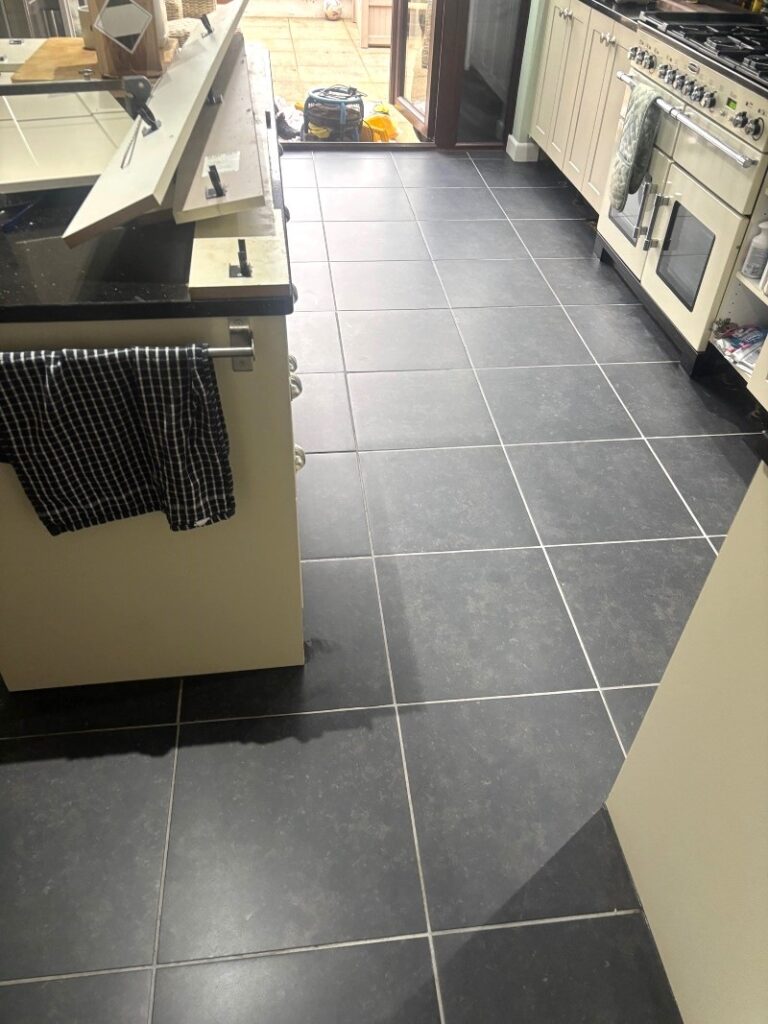
Professional Renovation of a Porcelain Tiled Kitchen in Nottinghamshire
20-Year-Old Porcelain Floor & Grouting Deep Clean in Beeston Read More »


